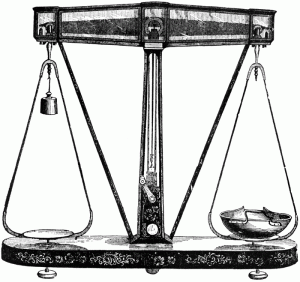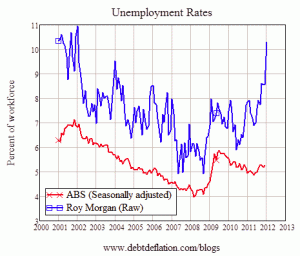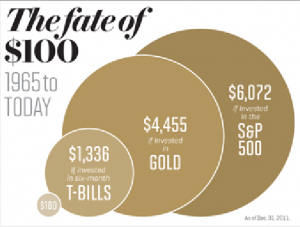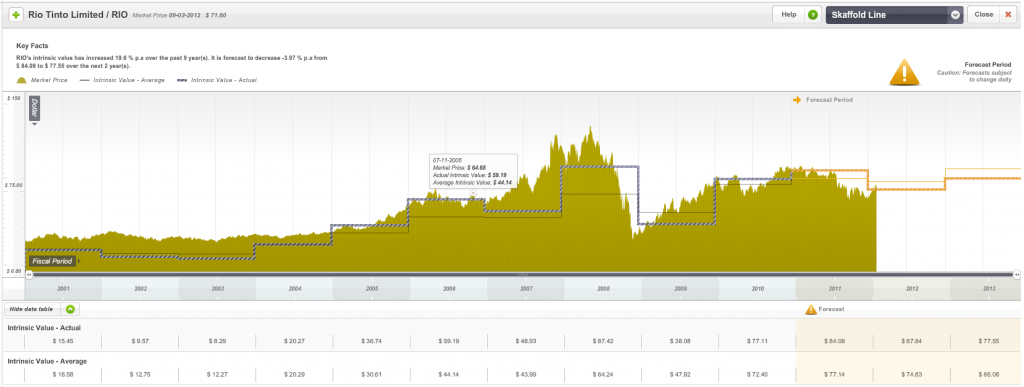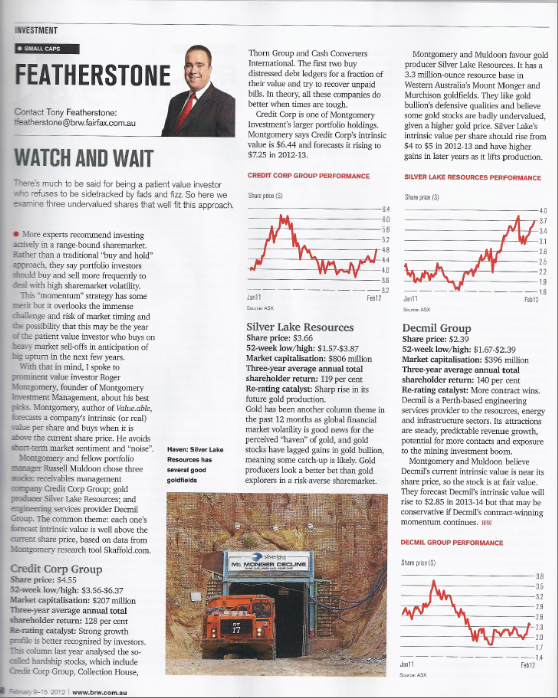 This piece by Satyajit Das was just sent to us and we thought it worth sharing.
This piece by Satyajit Das was just sent to us and we thought it worth sharing.
Why Europe’s Plan to End the Debt Crisis Can’t and Won’t Work
The most recent summit failed to reach even the lowest expectations. Euro-Zone leaders displayed poor understanding of the problems, confused strategies, political bickering and infighting as well as inability to take decisive steps and stick to a course of actions.
The actions need to try to stabilize the European debt crisis are well recognized. Countries like Greece need to restructure its debt to reduce the amount owed – a euphemism for default. Banks suffering large losses as a result of these debt write-downs need to be stabilized by injecting new capital and ensuring access to funding to avoid insolvency.
A firewall needs to be erected to quarantine Spain and Italy as well as, increasingly, Belgium, France and Germany from the further spread of the debt crisis. Steps must be taken to return Europe to sustainable growth as soon as possible.
Even if all these measures could be implemented as soon as possible, success is not assured. But without them, the chance of a disorderly collapse is increasingly significant.
What’s Chinese for Begging Bowl
Another option proposed is to enhance the European Financial Stability Fund using resources from private and public financial institutions and investors through Special Purpose Vehicles (SPV). Few details are available currently.
The idea seems to be to raise money from emerging nations with large foreign exchange reserves, such as China, or sovereign wealth funds. The EFSF would provide the equity in the SPV with the investors providing senior debt to increase the funds capacity. The scheme appears reminiscent of leveraged investment vehicles such as collateralized debt obligations (CDOs) and Structured Investment Vehicles (SIVs).
Support for the idea amongst potential investors is uncertain. French President Sarkozy solicited Chinese support by a direct appeal to Chinese President Hu Jintao. China’s position remains guarded in the absence of additional information. The Chinese position to date has been that Europe must get its house in order first and then China will assist. The current European position is different – China must give money to Europe to get its house in order.
China has considerable “skin in this game.” Europe is China’s biggest trading partner. China has around $800-1,000 billion invested in euros and European government bonds. Continuation of the European debt problems will have serious effects on China’s economy and its investments.
The Chinese leadership also has to consider the internal political reaction to increased investment in Europe. Chinese foreign investments, including in foreign financial institutions in 2007 and 2008, have incurred losses. China’s leaders face criticism from a large section of population for having invested Chinese savings poorly. China’s officials will not want to be seen to risk even more capital on a potentially lost cause. It is not clear that the EU proposal has sufficient chances of success to encourage China increasing its exposure to Europe, especially as relatively wealthy European countries, like Germany and France, are unwilling to put up more money and are seeking to limit their exposure.
China also faces domestic problems – inflation (partly as a result of the weak currency policies of the developed nations) and attendant wage pressures that are reducing its competitiveness, serious bad debt problems in their banking system and pressure to accommodate the economic aspirations of an increasingly restive population. China’s flexibility to act may be limited.
But China seems desperate to be seen as a “global power.” Ego might seduce them into committing more money.
Contributions from China and other emerging countries will not resolve the problems. China’s contribution, expected to be around euro 70 billion, is small relative to the total requirements. As its foreign exchange reserves have risen in recent years, China has purchased substantial volumes of euro-denominated assets, both directly and via bonds issued by the EFSF, without preventing peripheral European bond yields rising. The need for this special scheme is also not clear as the Chinese can presumably invest directly if they wish to and see value in doing so.
Any Chinese involvement would probably require additional support from the Euro-zone countries, which may be opposed by Germany and other nations. China is inherently risk averse and will seek to negotiate additional political concessions, such as reducing pressure on the revaluation of the Renminbi, trade and currency sanctions and criticism on human rights issues. It is not clear whether these will be acceptable.
The negotiating stance of China is evident from its desire to denominate any funding in Renminbi. The EFSF have not ruled this out. The idea is dangerous, as Europe would incur currency risk, becoming exposed to an appreciating Renminbi, adding to its long list of problems.
The entire proposal smacks of desperation and belief in a simple, quick solution where no such option exists.
At best, the plan provides funds to tide over the immediate funding problems of weaker Euro-Zone members. It does little to deal with the Euro-Zone’s structural problems. There is still the risk that Europe enters a prolonged period of low growth or recession. The plan does not address the economic divergences that exist within the Euro-Zone or ease the painful adjustment processes that weaker members will still have to undergo within the constraints of the single currency. These problems are far more difficult to fix than the task of finding buyers for the required amount of government debt.
Balancing Imbalances
The EU refuses to deal with fundamental problems. The austerity and balanced budget measures, reinforced and reiterated in the plan, cannot deal with the primary problem – the deflation of the debt-fuelled bubble.
The EU is seeking to enforce the rarely adhered to rules for membership of the euro, the Stability and Growth Pact requires a deficit no larger than 3% in any one year and a Debt to GDP ratio no larger than 60%. Based on 2010 figures, Austria, Belgium, Cyprus, France, Ireland, Italy, Portugal, Spain and Greece do not meet one or both of these tests on current measures. Only Germany, Finland and the Netherlands are in compliance and would pass in 2013 on current projections.
Strict enforcement of this rule about deficits would prevent counter-cyclical spending by governments undermining economic recovery and lock the Euro-Zone into a death spiral of budget deficits, further budget cuts and low growth.
The problem is compounded by the competitiveness gap between Northern and Southern countries, estimated at 30% difference in costs. The EU’s refusal to contemplate a break-up or restructuring of the euro makes dealing with this problem difficult.
For many of the weaker countries, the best option would be to devalue their currency in the same way that the U.S. and Britain are debasing dollars and sterling respectively. Unable to devalue or control interest rates, these weaker countries are trapped in a vicious and ultimately self-defeating cycle of cost reduction.
An additional problem is the internal imbalances exemplified by Germany’s large intra-Euro-Zone trade surplus at the expense of deficit states, especially the Club Med countries like Greece, Portugal, Spain and Italy. German reluctance to boosting spending and imports makes any chance of resolving the crisis even more remote.
German hypocrisy, in this regard, is problematic. German banks lent money to many countries to finance exports, which benefited Germany. Germany also gained export competitiveness from a weaker euro–an exchange rate of euro 1 = U.S. $ 2.00 would be a realistic exchange rate if the euro were to be a purely German currency. Reluctance to confront these problems makes a comprehensive resolution of the crisis difficult.
Endgame
In chess, endgames require using the few pieces left on the board to achieve a result. Strategic concerns in endgames are different to those earlier in the game. The King becomes an attacking piece. Pawns become more important because of the potential to promote it to a queen. Endgames are more limited and finite than say openings.
The plan has bought time, though far less than generally assumed. As the details are analysed, weaknesses, unless remedied, will be quickly exposed.
The European debt endgame remains the same: fiscal union (greater integration of finances where Germany and the stronger economies subsidize the weaker economies); debt monetization (the ECB prints money); or sovereign defaults.
The accepted view is that, in the final analysis, Germany will embrace fiscal integration or allow the printing of money. This assumes that a cost-benefit analysis indicates that this would be less costly than a disorderly break-up of the Euro-Zone. This ignores a deep-seated German mistrust of modern finance as well as a strong belief in a hard currency and stable money. Based on their own history, Germans believe this is essential to economic and social stability. It would be unsurprising to see Germany refuse the type of monetary accommodation and open-ended commitment necessary to resolve the crisis by either fiscal union or debt monetization.
Unless restructuring of the euro, fiscal union and debt monetization is removed from the verboten list, sovereign defaults may be the only option available.
Regards,
Satyajit Das
And Ray Dalio’s piece will give you a terrific framework to help you understand what Satyajit is talking about, where we are, how we got here and where we are going…Click Here
Posted by Roger Montgomery, Value.able and Skaffoldauthor and Fund Manager, 9 February 2012.

